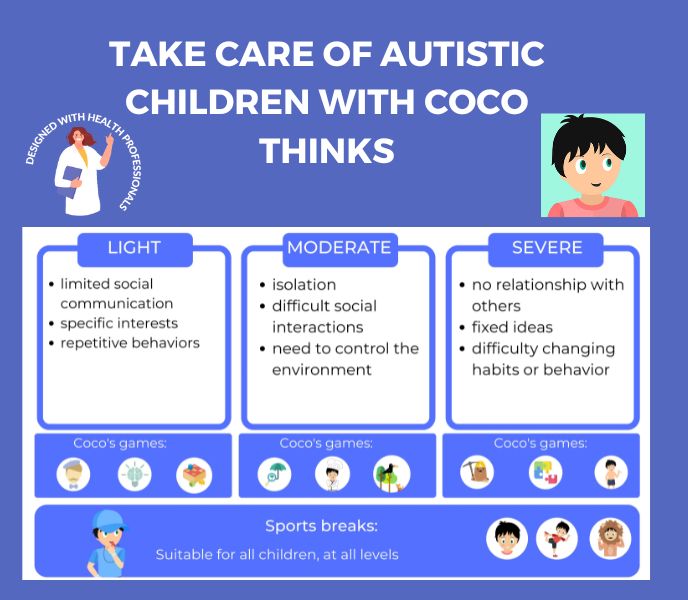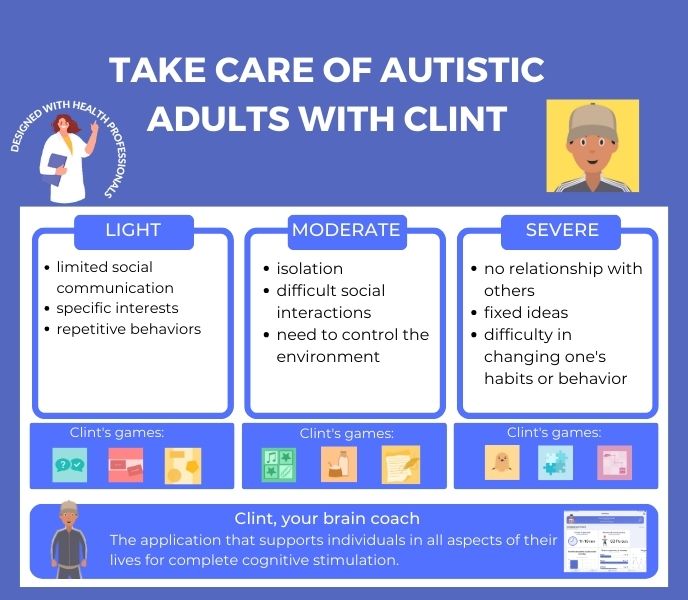Understanding the early warning signs of a crisis in autistic children is paramount for caregivers and educators alike. These signs, often subtle and nuanced, offer crucial insights into the inner world of children on the autism spectrum. Recognizing these indicators isn’t just about averting immediate turmoil; it’s about fostering an environment of understanding and support.
Early intervention in crises serves a dual purpose: it mitigates the intensity of the crisis itself while also laying the groundwork for long-term coping strategies. By identifying triggers and preempting escalating behaviors, caregivers can create a safer and more stable environment for autistic children to thrive. Moreover, proactive intervention promotes emotional regulation and communication skills essential for navigating everyday challenges.
In this exploration, we delve into the significance of identifying crisis signs in autistic children and the pivotal role early intervention plays in their holistic development. By empowering caregivers with knowledge and strategies, we endeavor to create a more inclusive and supportive community for children with autism.
Understanding Autism Spectrum Disorder (ASD)
Autism Spectrum Disorder (ASD) encompasses a wide range of characteristics and challenges that individuals may face. From difficulties in social interaction and communication to repetitive behaviors and sensory sensitivities, the spectrum manifests in diverse ways across individuals. One of the distinctive features of autism lies in how individuals respond to stress, overwhelming situations and emotions in general, here is an article to learn more about it. While some may become agitated or exhibit meltdowns, others might withdraw or engage in repetitive movements as a coping mechanism.
Understanding these unique responses is crucial for providing effective support and intervention tailored to the individual’s needs. By acknowledging the complexity of autism and embracing neurodiversity, we can create inclusive environments that respect and accommodate the diverse experiences and perspectives of individuals on the spectrum.
Identifying Early Warning Signs
Identifying early warning signs in autistic children involves recognizing subtle shifts across various domains. Changes in behavior or routine, such as increased agitation or insistence on sameness, often signify underlying distress or discomfort. Heightened sensory sensitivities, wherein certain sounds, textures, or lights become overwhelming, can lead to withdrawal or outbursts as a means of self-regulation. Additionally, communication difficulties or breakdowns may manifest as a struggle to express needs or understand social cues, exacerbating feelings of frustration and isolation.
By attentively observing these indicators and understanding their significance within the context of autism, caregivers and educators can intervene proactively to mitigate potential crises and provide tailored support that addresses the unique needs of autistic children.
Physical Warning Signs
Physical warning signs in autistic individuals often manifest in various forms, providing cues to their emotional and psychological states. Agitation or restlessness may be evident through fidgeting, pacing, or difficulty staying still. Concurrently, increased heart rate or breathing rate can indicate heightened arousal levels and physiological stress responses. These physical manifestations may further escalate in the presence of anxiety or distress, leading to symptoms like sweating, trembling, or even gastrointestinal discomfort.
Recognizing these bodily signals is crucial for caregivers and support networks to intervene promptly and effectively. By acknowledging the interconnectedness of physical and emotional well-being in autism, individuals can receive the necessary support and accommodations to navigate challenging situations and foster a sense of security and stability in their environments.
Emotional Warning Signs
Emotional warning signs serve as poignant indicators of inner turmoil and distress in autistic individuals. Irritability or anger outbursts may surface as a response to overwhelming stimuli or difficulties in communication and social interaction. Similarly, tearfulness or emotional withdrawal could signify feelings of frustration, confusion, or sensory overload, prompting a retreat from social engagement.
Expressions of fear or panic often stem from challenges in processing sensory information or navigating unfamiliar situations, heightening anxiety levels and exacerbating emotional responses. Recognizing these emotional cues is pivotal for caregivers and support networks to provide empathetic and effective interventions that validate the individual’s experiences and address underlying triggers. By fostering a nurturing and understanding environment, autistic individuals can feel empowered to express their emotions and access the support they need to navigate the complexities of daily life.
Behavioral Warning Signs
Behavioral warning signs in autistic individuals offer critical insights into their emotional well-being and coping mechanisms. Repetitive behaviors or stimming, such as hand-flapping or rocking, often serve as self-soothing techniques in response to sensory overload or anxiety-provoking situations. Withdrawal from social interactions may manifest as a retreat into solitary activities or disinterest in engaging with peers and caregivers, indicating feelings of overwhelm or discomfort in social settings.
Additionally, aggression towards self or others can emerge as a result of communication challenges, frustration, or an inability to regulate emotions effectively. Recognizing these behavioral cues enables caregivers and educators to implement supportive strategies tailored to the individual’s needs, fostering a nurturing environment that promotes emotional regulation and positive social interactions for autistic individuals.
Environmental Triggers
Environmental triggers play a pivotal role in influencing the well-being of autistic individuals, often precipitating heightened stress and emotional dysregulation. Loud noises or crowded spaces can overwhelm sensory sensitivities, triggering anxiety or sensory overload reactions. Similarly, changes in routine or unexpected events disrupt the predictability and structure that many autistic individuals rely on for comfort and security, leading to feelings of uncertainty and distress.
Overstimulating sensory environments, characterized by intense lights, strong odors, or chaotic visual stimuli, can further exacerbate sensory sensitivities and contribute to sensory overload. Understanding these environmental triggers is essential for creating supportive and accommodating spaces that prioritize the sensory needs and emotional well-being of autistic individuals, fostering environments that promote comfort, safety, and a sense of belonging.
Responding to Crisis Situations
Responding to crisis situations involving autistic individuals requires a thoughtful and empathetic approach centered on understanding their unique needs and communication styles. Firstly, staying calm and composed is paramount, as heightened emotions can exacerbate the situation and escalate distress. Providing reassurance and comfort through verbal cues or gestures helps instill a sense of safety and trust, reassuring the individual that support is available. Implementing strategies to de-escalate the situation involves identifying triggers, modifying the environment, and offering alternative coping mechanisms tailored to the individual’s preferences and sensory sensitivities.
This might include providing a quiet space, offering sensory tools, or using visual supports to facilitate communication. By prioritizing empathy, patience, and proactive intervention, caregivers and support networks can effectively navigate crisis situations, promoting a sense of security and well-being for autistic individuals.
Establishing a Crisis Management Plan
In the realm of supporting autistic individuals through crises, establishing a comprehensive crisis management plan serves as a cornerstone for effective intervention and support. This plan acts as a proactive framework designed to anticipate and address potential challenges before they escalate, providing a structured approach to crisis management that prioritizes the well-being and safety of the individual.
Identifying triggers and warning signs in advance
The first step in crafting a robust crisis management plan involves identifying triggers and warning signs in advance. By closely observing the individual’s behavior, communication patterns, sensory responses; caregivers and support professionals can pinpoint specific triggers and early warning signs indicative of potential crises. This proactive approach enables stakeholders to intervene swiftly and implement targeted strategies tailored to the individual’s unique needs and preferences, fostering a supportive environment that promotes emotional regulation and well-being.
Developing clear steps for intervention
Once triggers and warning signs are identified, the next crucial component of the crisis management plan involves developing clear steps for intervention. This entails outlining concrete strategies and techniques aimed at de-escalating crises, promoting emotional regulation, and ensuring the safety of the individual and those around them. From providing sensory accommodations to offering verbal reassurance and implementing calming techniques, each step is carefully crafted to address the specific needs and challenges of the individual, empowering caregivers and support professionals to respond effectively in times of distress.
Communicating the plan with caregivers and support professionals
Effective communication lies at the heart of any successful crisis management plan. It is imperative to communicate the plan comprehensively with caregivers and support professionals involved in the individual’s care network… Clear dissemination of information ensures that all stakeholders are equipped with the knowledge and tools necessary to implement the crisis management plan consistently and collaboratively. Through open dialogue, ongoing training, and regular updates, caregivers and support professionals can work synergistically to uphold the individual’s well-being and foster a supportive environment conducive to resilience and growth.
Seeking Professional Help
Seeking professional help is vital when supporting autistic individuals through challenging situations and crises. Knowing when to involve mental health professionals or therapists is crucial, especially when behaviors or emotions become overwhelming and impact daily functioning or safety. Accessing crisis hotlines or emergency services provides immediate support during acute crises, offering guidance and intervention when needed most. Collaborating with healthcare providers for ongoing support ensures continuity of care and tailored interventions that address the individual’s unique needs and goals.
Working closely with professionals fosters a comprehensive approach to managing challenges and promoting mental well-being for autistic individuals and their caregivers. By recognizing the value of professional support and resources, individuals can access the necessary tools and expertise to navigate crises effectively and foster long-term resilience and growth.
Supporting Recovery and Resilience
Supporting recovery and resilience in autistic individuals involves a comprehensive approach that prioritizes emotional well-being and proactive strategies for stability. Providing opportunities for debriefing and reflection allows individuals to process experiences, identify triggers, and explore coping mechanisms in a safe environment. Emotional support and validation are crucial in fostering acceptance and understanding of the individual’s feelings and experiences.
Implementing preventive strategies to minimize future crises includes identifying patterns, modifying environments, and teaching adaptive coping skills to enhance resilience and self-regulation. Coco Thinks & Coco Moves, an educational program tailored for individuals with autism, offers engaging activities to teach adaptive coping skills and promote emotional regulation. By prioritizing emotional support, reflection, and proactive intervention, caregivers and support networks empower autistic individuals to navigate challenges and cultivate resilience. Recognizing early warning signs and implementing intervention strategies are vital for effective crisis management. By understanding signs of distress and emphasizing proactive approaches, supportive environments can prioritize the unique needs of autistic individuals.
Encouraging ongoing education and preparedness for caregivers ensures they are equipped with the knowledge and resources necessary to provide empathetic and effective support. Together, by fostering awareness, empathy, and proactive intervention, inclusive communities can be created where autistic individuals thrive and overcome challenges with resilience and support.
AND FOR FURTHER INFORMATION

COCO, FOR AUTISTIC CHILDREN
COCO is a program adapted for autistic children that offers a collection of educational and cognitive games. Increasing level of difficulties let the children progress at its own pace. Also a mandatory sports break every 15 minutes of screen time to avoid addiction.

CARING FOR AN AUTISTIC CHILD
In this guide, we’ll give you practicals advice on how to support a child suffering from Autism and how to stimulate and bond with them. Useful day-to-day tips to make life easier for family and professional caregivers.

CLINT, FOR AUTISTIC ADULTS
Adapted for adults affected by autism , the CLINT program offers different games in order to develop the knowledge, improve concentration and strengthen mental capacities. CLINT has been designed to be accessible for everyone, and keep a close-eye to the mental health.
Other articles that might interest you:
How Parents Can Contribute to Teacher Training
As we delve into the realm of education, it becomes increasingly clear that teacher training is not merely a...
Differentiated Instruction Approaches: Training and Practical Application
Differentiated instruction is a pedagogical approach that recognizes the diverse needs of students in a classroom. It...
Key Skills Teachers Need to Support Students with Special Needs
As we embark on our journey to support children with special needs, it is essential for us to cultivate a deep...





